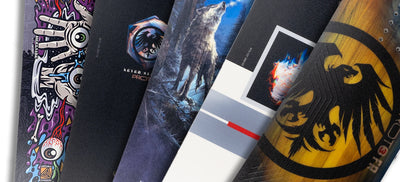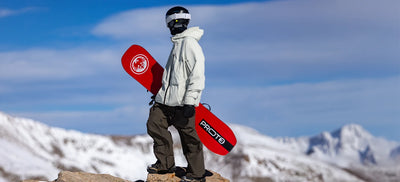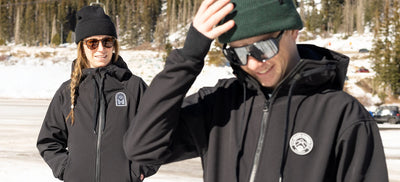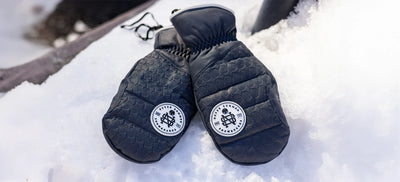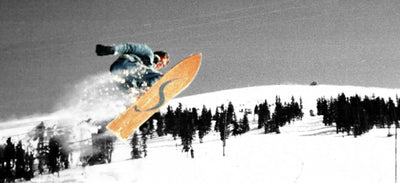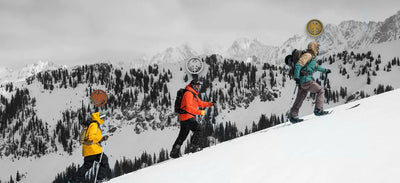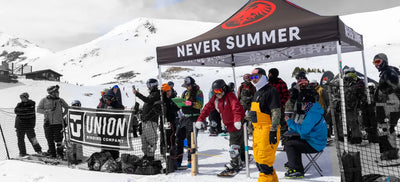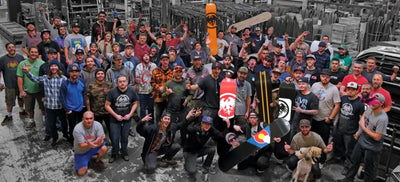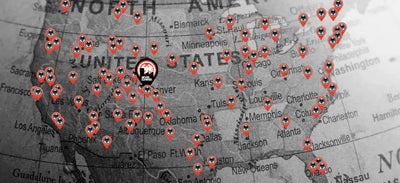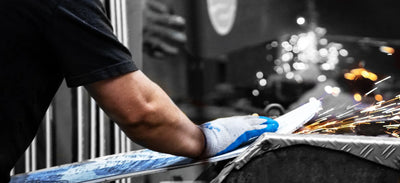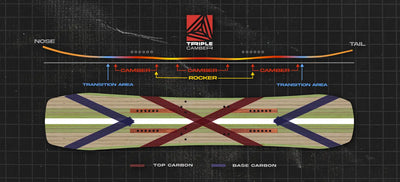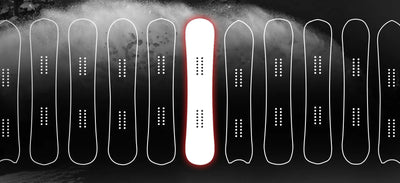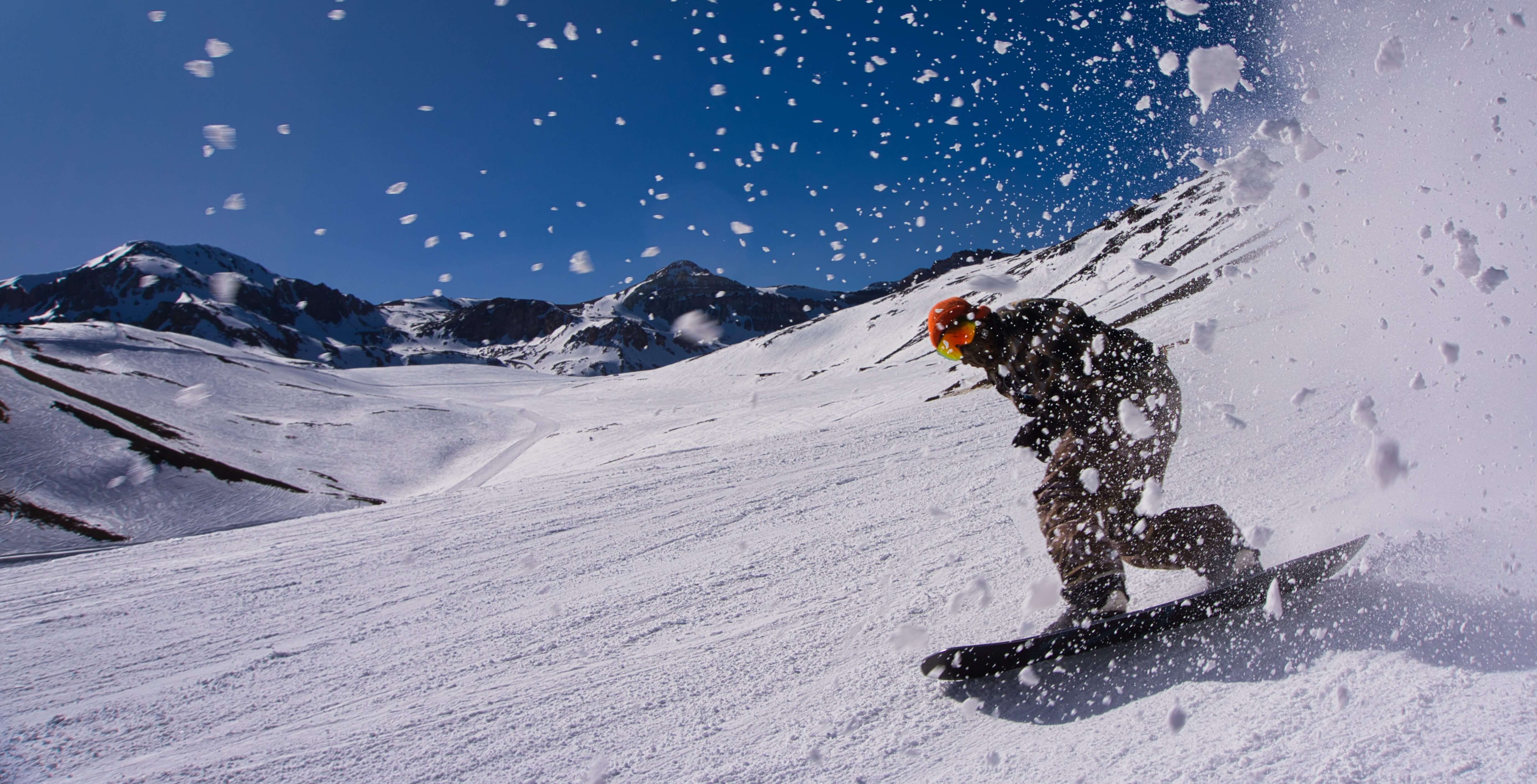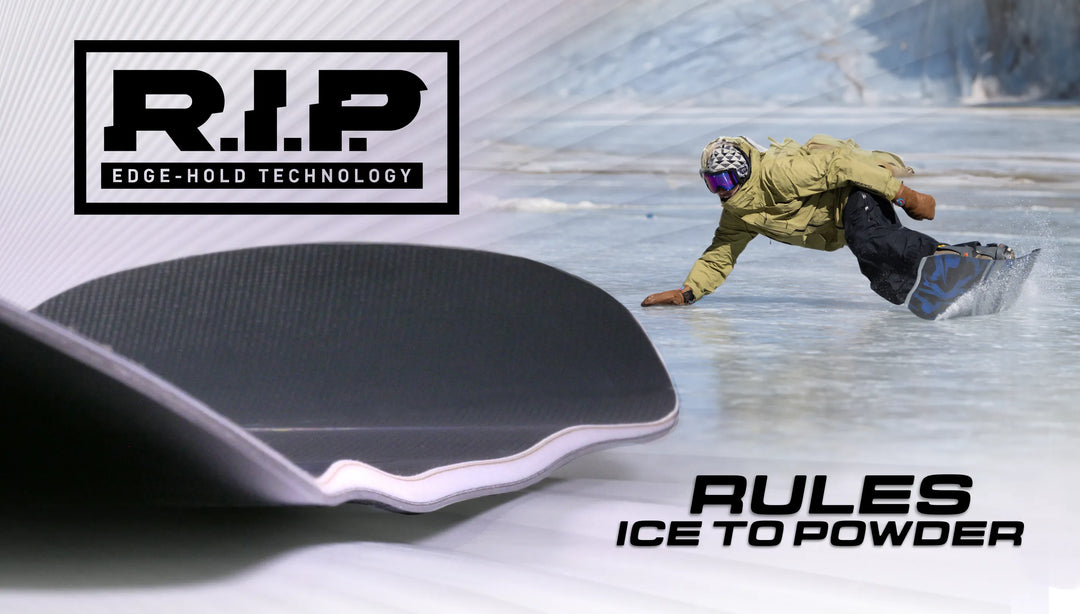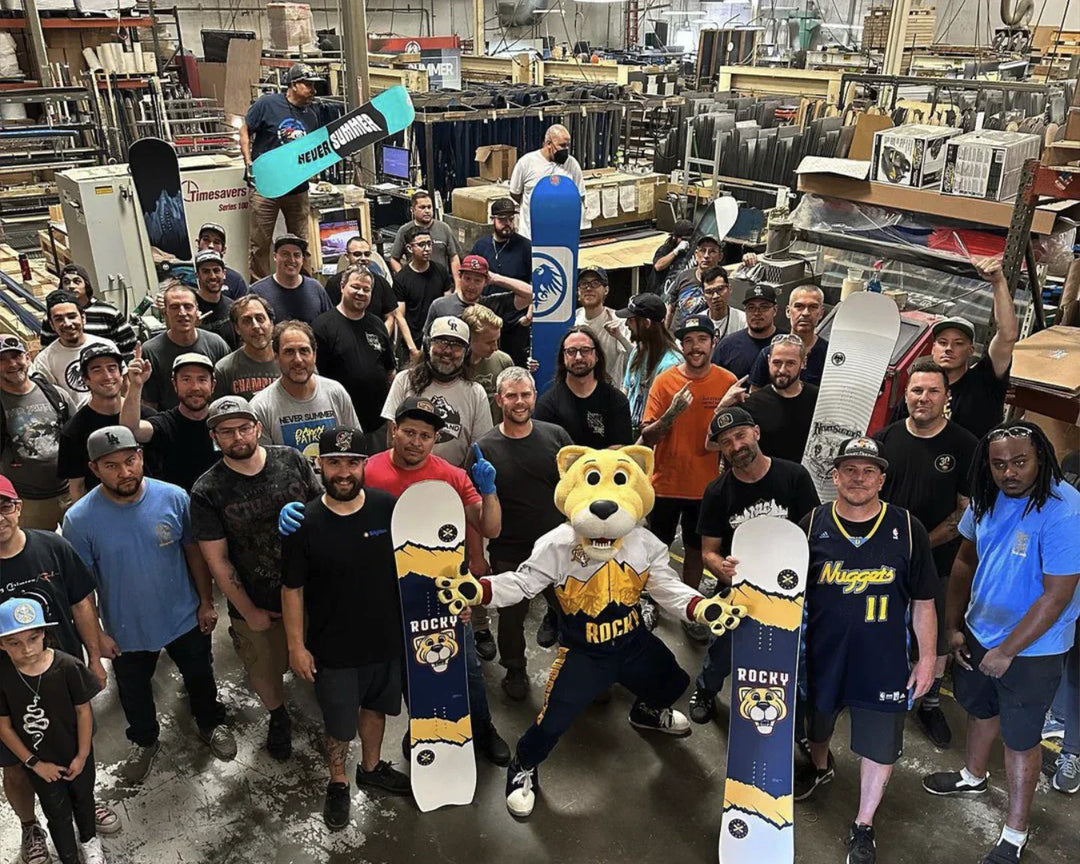Snowboarding is a popular winter sport that can provide a thrilling experience to those who love the outdoors and adventure. You may be seeing awesome videos on Instagram or YouTube of people sending park jumps, shredding big mountain powder lines, or even just getting creative on corduroy and thinking to yourself “Dang, I want to snowboard.” But the question on many people's minds is, "Is snowboarding hard?" The answer is, like most things in life, it depends on your experience, natural talent, and other factors.

First day on a snowboard
While it may be challenging and frustrating at times to learn how to snowboard, there are many ways to make snowboarding easier to learn and more fun when getting on the mountain for your first time. Things like the proper snowboard setup and equipment, taking a lesson, understanding weight shift and balance techniques before you get on a hill, and building your confidence before stepping up to new and more challenging runs can all make snowboarding easier. Snowboarding is all about having fun, and these tips below will help you have fun on your first day and many days looking forward.
How difficult is snowboarding? Learning how to balance on the board, linking and carving turns, getting on and off of a chairlift, and stopping can take some time and patience for riders. If you have experience in board sports such as skateboarding, wakeboarding, or surfing, some techniques will carry over, but there are still snowboarding techniques that will still take some practice to get used to. Falling down is a common experience for beginners, and it can be frustrating to keep getting up and trying again. However, with a little bit of practice and perseverance, most people can master the basics of snowboarding in just one or two lessons.

Take a snowboarding lesson/class vs Teaching yourself to snowboard
Taking a lesson even just once with a qualified instructor can be a game changer for many riders that are struggling with their balance and going between their toe and heel edge to link together turns. For the best experience, get a professional instructor for your first time snowboarding to learn proper technique and form. An instructor can also help with fundamentals, for example; putting on and off bindings, pushing in a lift line, loading and unloading a chairlift, tips on gear like goggles, outerwear and basic skier/snowboarder etiquette. This will also allow you to know if you would like to schedule follow up lessons or get out on the mountain and teach yourself how to snowboard.
Teaching yourself how to snowboard can be a real challenge. Watching videos on YouTube that break down the techniques of weight shifting and improving your balance are a huge help in teaching yourself how to snowboard. Have a friend take a video of you if you are struggling with a specific technique. Getting a visual break down of what you’re doing wrong may make it much easier for you to correct. Professionals break down their tricks and rides all the time to see how they could improve.
Start on small slopes with less incline, less people, and less variable snow to build your basic skills and confidence before moving onto steeper and more variable slopes. Going out on the hill with a patient, experienced friend that can answer questions as well as give constructive feedback is a huge help to learning snowboarding and inspiring confidence when learning on your own. Don’t be afraid to ask for tips and advice, it is crucial to your learning experience early on and avoiding common mistakes. A friend with experience can also help with adjustments, setting up your board, gearing up with the proper outerwear, goggles etc., for the day.
Once you have learned the basics, you can start to explore more advanced techniques such as buttering, euro carving, riding switch, hitting jumps and rails, riding powder, and trees. These can be challenging, but also rewarding as you push your limits and improve your skills. As you develop these advanced techniques, you can use your own creative and artistic vision to create beautiful snowboarding combinations all over the mountain.
Renting Vs Buying Equipment
One of the first things that you need to decide is if you are going to rent your equipment or purchase your equipment. Renting or demoing snowboard equipment can be a good option if you only snowboard occasionally or are new to the sport, as it can be more cost-effective and convenient. However, if you plan to snowboard frequently or want to personalize your equipment to become familiar with, buying your own snowboard and gear is a better investment. It ultimately depends on your individual needs and how often you plan to hit the slopes.
If you are renting and want something that is “easier” to ride than a rental, look for a demo. A demo is more advanced than most rental snowboards and is what brands like Never Summer actually sell to their customers. You can get a demo that is more tuned for beginners giving you that advantage for your first day on the hill. We demo snowboards straight from The Never Summer Factory in Denver, CO (Book a Factory Tour here). A great choice that we have for beginners is the Snowtrooper for men and Infinity for Women.

Equipment to make snowboarding easier
The first thing you want to make snowboarding easier is a snowboard that is easier to maneuver and more forgiving on the snow. Snowboards that are softer and shorter in size are usually a better choice for beginners. The ability to flex the board with your feet and legs allows you to have more control in situations where you may make a mistake when learning to snowboard. Softer flexing boards are more forgiving and easier to transfer from a toe-side to heel-side edge at slower speeds. You’ll want a board with a more forgiving camber such as a hybrid rocker camber snowboard, like Never Summer’s patented Original Rocker & Camber profile. Snowboards that feature rocker in-between the feet and camber under the feet extending to the nose and tail are easier to learn on and avoid catching edges because they are reliable when turning and carving at speed due to the camber under the feet, but at slow speeds are easier to maneuver due to the “pivot point” the rocker creates between the feet. Snowboards that feature a “textured topsheet” create a more grip feeling which makes riding one footed and getting off the chairlift easier. If you have a glossy or another slippery material for top-sheet you may need a stomp-pad.
The best snowboard binding type to start off is generally a traditional two-strap binding like the Never Summer X FIX Magnum or Nation. Two strap bindings provide a good balance of support and flexibility, and it is easy to adjust and customize to your preferences. Additionally, it allows for good board control and responsiveness, which is important when you're starting out. Binding types, such as rear-entry or step-on bindings make it faster and simpler to get in and out of your bindings at the top and bottom, however may cause problems for beginners that are still trying to nail down their balance. A conventional strap binding can also be easier to put on if there is an accumulation of new snow or in an area that isn’t flat. Additionally, step-on bindings require specific boots that may become costly or not available from your favorite brands.
Generally, soft flex snowboard boots with a comfortable fit and good support are best for beginners. Similar to a board, a soft flexing boot is more forgiving than a rigid, stiffer boot. It's important to try on different boots and choose the ones that fit well and feel comfortable, as proper fit is crucial for both comfort and performance. A common mistake beginners make buying or renting boots is getting too big of a size. A tight fitting boot will reduce heel lift and movement in the boot, giving you more control over the board. If you are buying boots, many shops offer customization through boot fitting. This gives you the best experience and will make learning snowboarding easier on your feet.
Helmet and Goggles are a must for learning on the mountain. Reflection of the sun off the snow is very bright and can cause permanent eye damage if you do not have the proper protection such as goggles. Vision is so important when snowboarding, goggles help see contours in the snow, hazards and obstacles, improve vision in low light conditions and protect your eyes from blowing snow. As we have already said, falls happen when learning snowboarding and the best way to avoid a head injury is to get a helmet. A snow jacket, snow pants, gloves or mittens that are waterproof make you much more comfortable. Being comfortable while snowboarding makes it much easier to snowboard. If you are snowboarding in a cold climate, merino wool or other layering will keep you much more comfortable. A great pair of snowboard socks can make it or break it for many riders on a cold day.
Other things that make snowboarding easier
It's important to note that snowboarding can also be physically demanding. Riding down the mountain requires strength and endurance, and you may feel sore after a day on the slopes. Soreness goes away the more that you do it and your muscles build up the strength needed. It makes snowboarding much easier when you are in good physical shape. This includes off hill strength training on muscles that you use while snowboarding. Be sure to stretch before starting your day.
Getting your equipment sized correctly and getting your snowboard set up properly makes snowboarding much easier. We have a total guide that you can check out on How To Choose a Snowboard with all of that information and more. If you just need to set up your bindings, we have a great read on How to Setup a Snowboard.
The best way to make snowboarding easier overall is practice regularly. Practice makes snowboarding so easy after just one season of getting consistent days. When getting practice during your first days in the mountains, focus on balance and weight distribution mainly. Try to keep your weight centered over the board, knees bent and really learn your balance over the board when linking turns from edge to edge.
At the end of the day, Snowboarding can be both hard and easy, depending on your level of experience and natural abilities. But with practice and determination, anyone can learn to snowboard and enjoy the unique experience it provides in the mountains. Whether you are a beginner or an expert, snowboarding is a super fun and exciting winter sport that is worth trying at least once.
If you have additional questions about demoing a snowboard or getting the perfect snowboard for you to learn on, please Contact Us.


